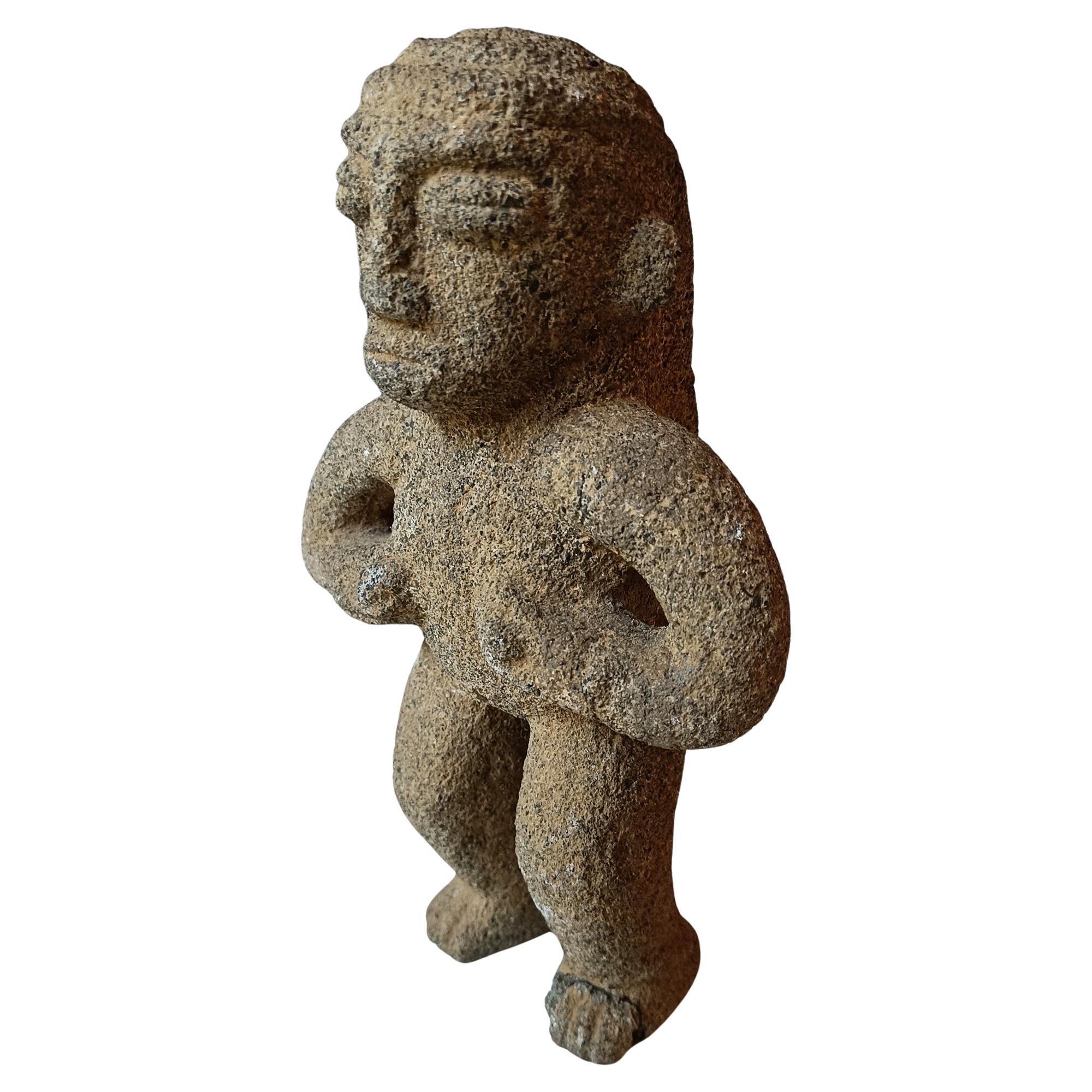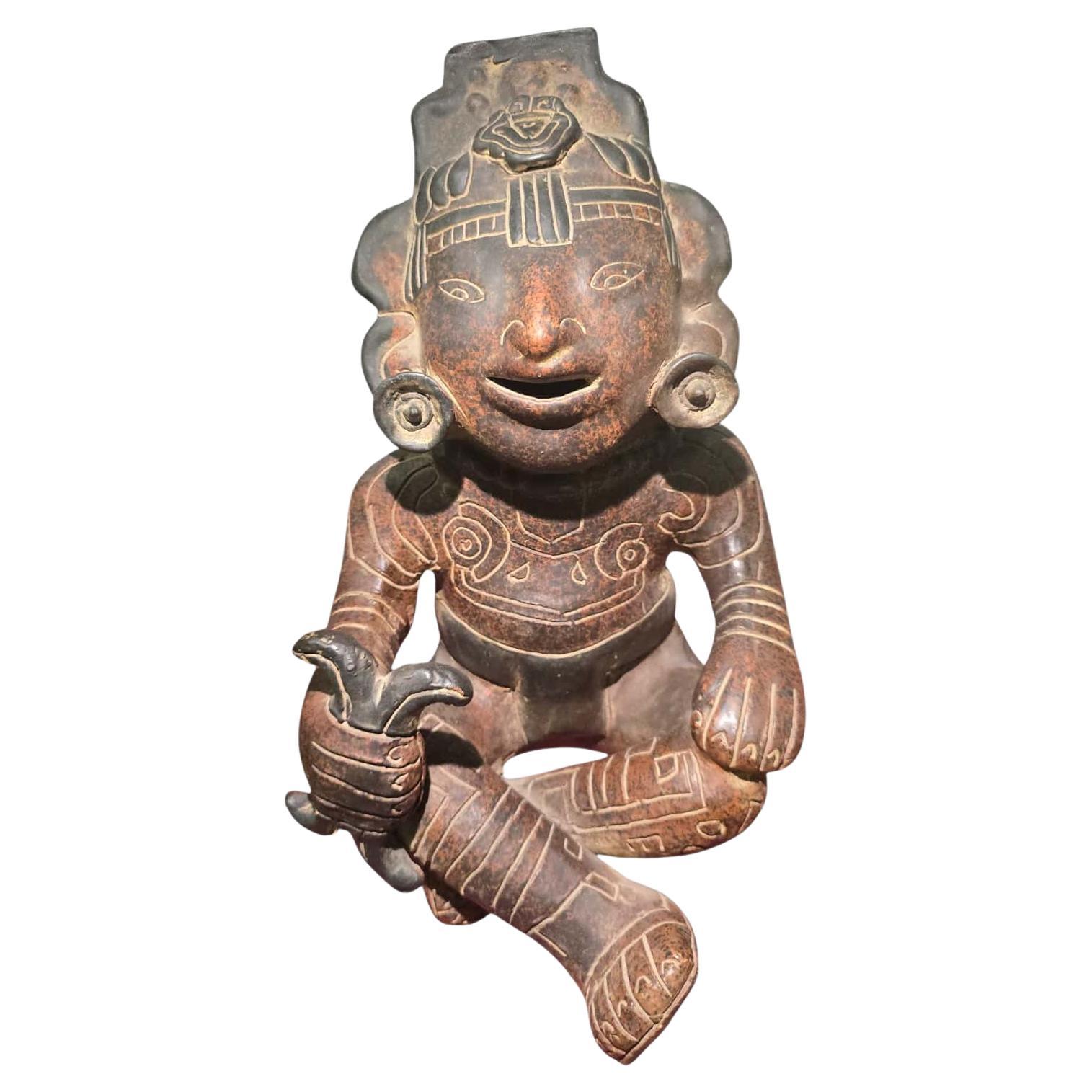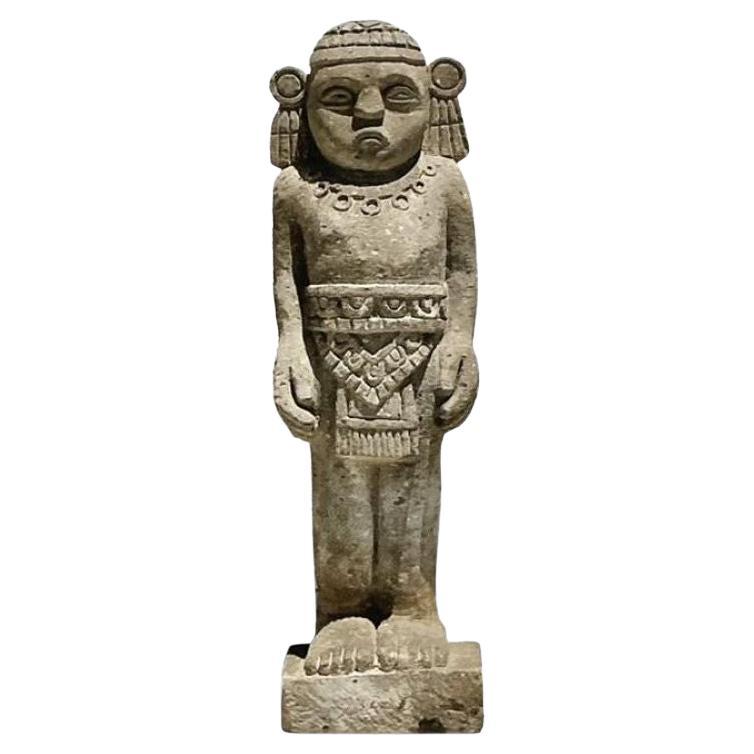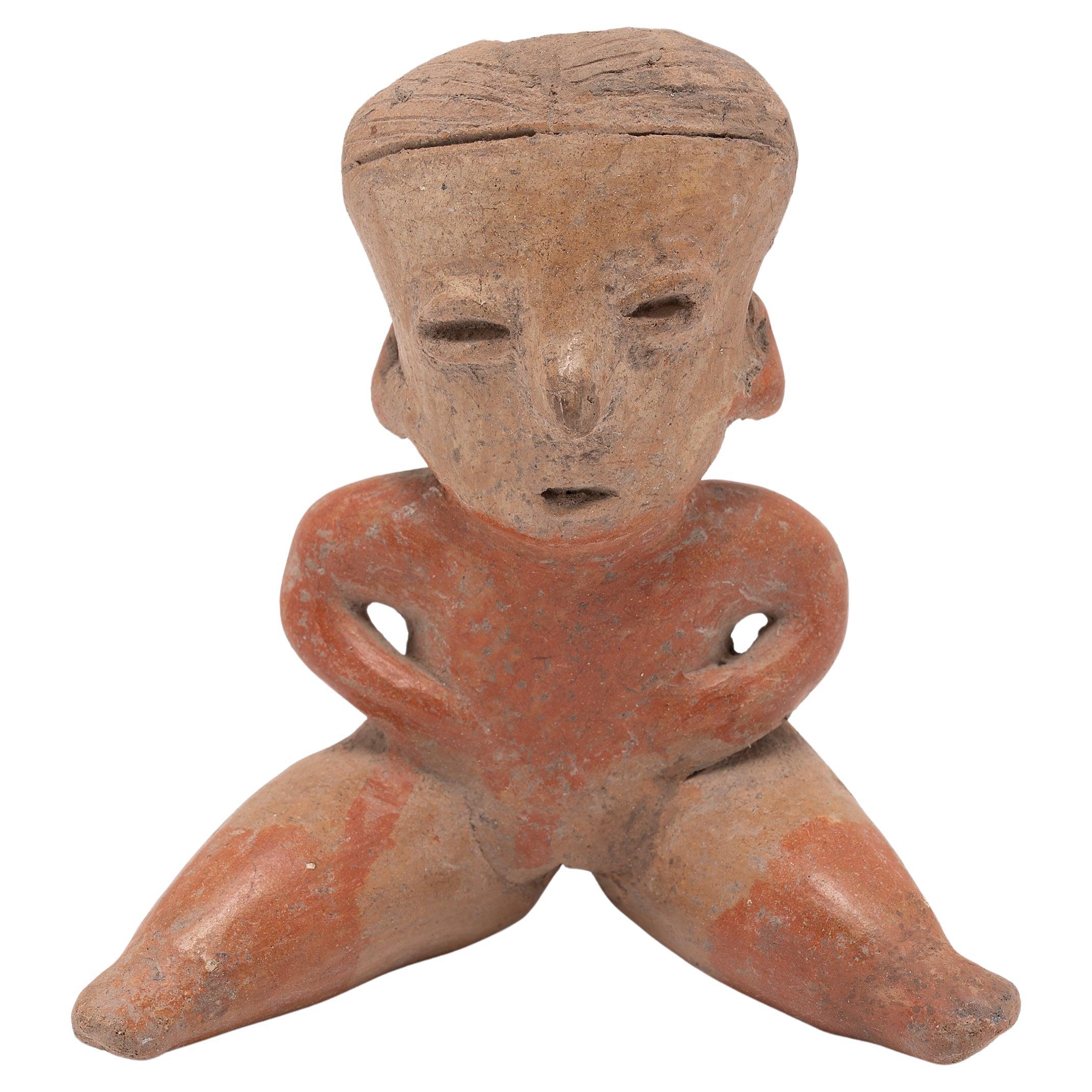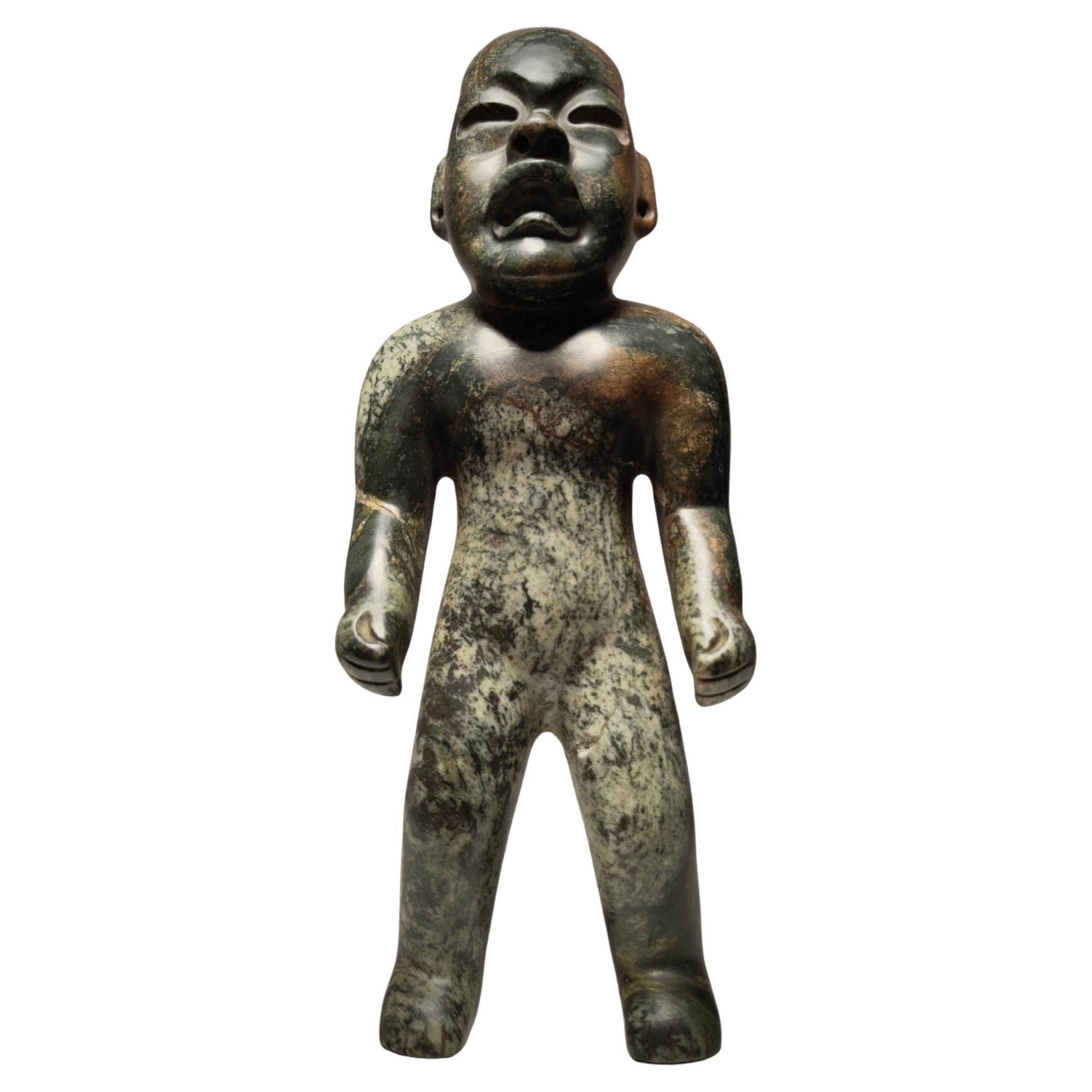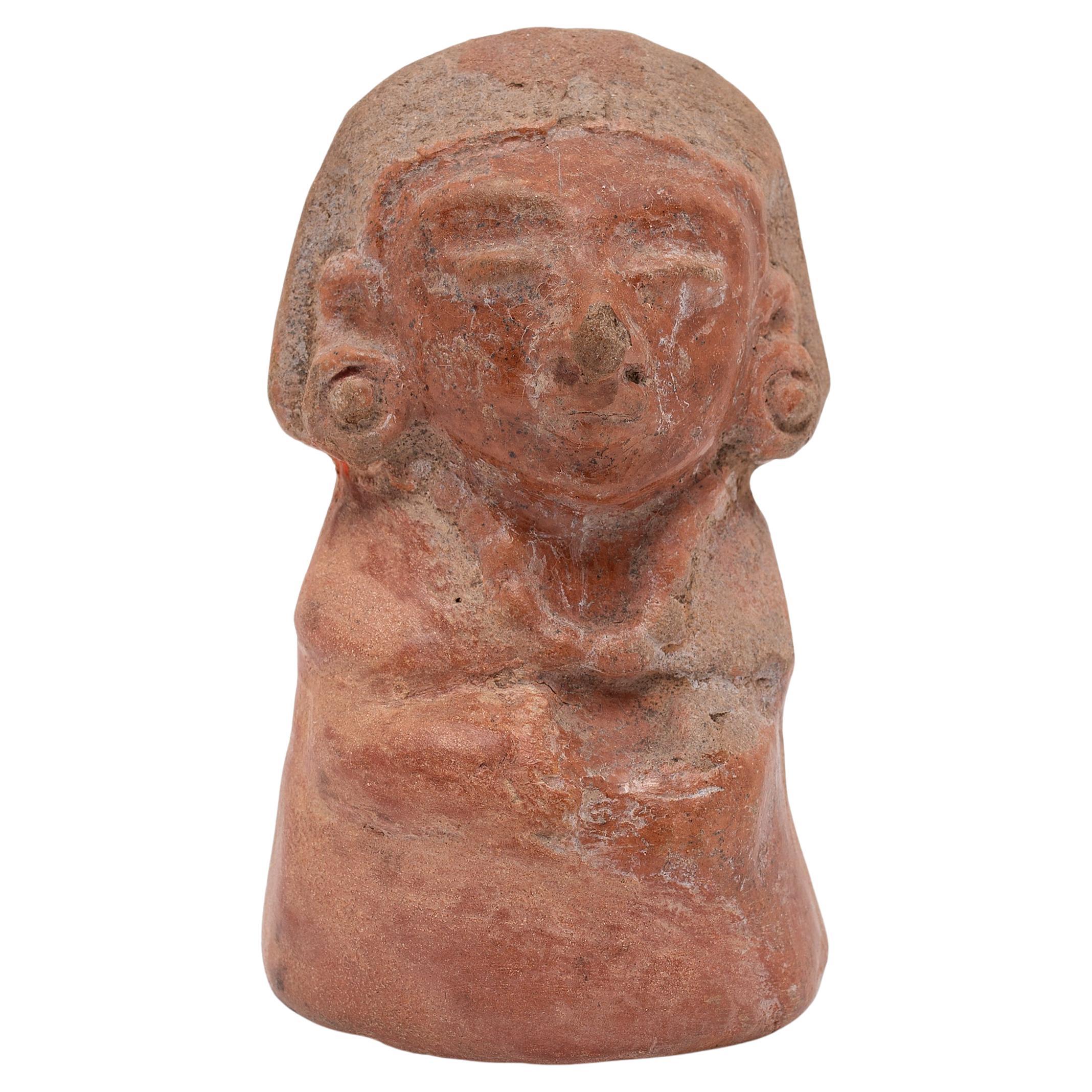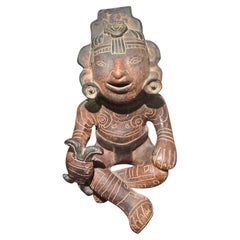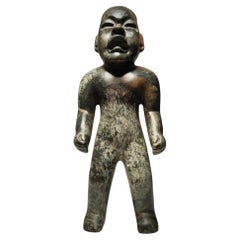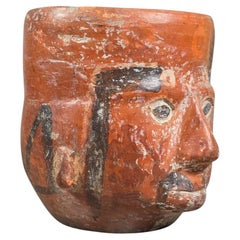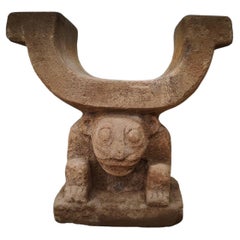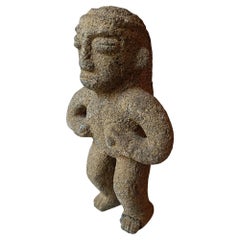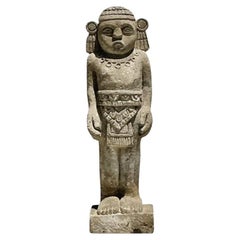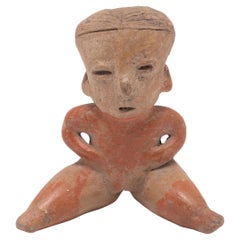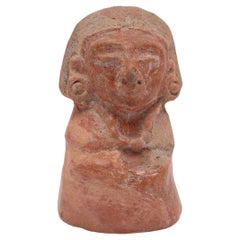Items Similar to Stone Carved Anthropomorphic Sculpture From The Recuay Culture Peru 400bc-400ac
Want more images or videos?
Request additional images or videos from the seller
1 of 14
Stone Carved Anthropomorphic Sculpture From The Recuay Culture Peru 400bc-400ac
$52,662.21
£38,846.49
€44,000
CA$72,966.13
A$79,227.03
CHF 41,956.51
MX$971,096.44
NOK 519,228.33
SEK 490,643.29
DKK 334,965.89
About the Item
ANTHROPOMORPHIC SCULPTURE CARVED IN STONE OF THE RECUAY CULTURE PERU 400BC-400AC
Recuay is an archaeological culture of Ancient Peru that developed in the Sierra of the current Peruvian department of Áncash between 200 AD. C. until 600 d. C. It corresponds to the stage called Regional Developments, it has also been called the Huaylas or Santa culture.
Like the other Early Intermediate cultures, little is known about this culture. The most accepted position is that it was an extension of the Chavin culture, after the influence of the "White on Red" style in the region. Regarding the political aspect of the recuay, there is a hypothesis that questions their autonomy and maintains that Recuay would be part of one of the many political units that made up the Moche state.
The recuay style, characterized by its ceramics and stone sculpture, was initially described by Eduard Seler in 1893, based on ceramic specimens brought to the Ethnographic Museum in Berlin by Mariano M. Macedo. Seler named this style of pottery Recuay, based on the report that these pieces had been found in the town of Recuay. Later studies showed that this characteristic pottery was not originally from Recuay but from Copa, near Carhuaz, for which reason the name change to that of this town was proposed. Eventually the name of Huaylas was used for this culture. In 1919 Julio C. Tello explored the area and recovered lithic sculptures and Recuay-type ceramics. In the 1960s Rafael Larco Hoyle proposed changing the names of Recuay and Copa to Santa, arguing that the Recuay style had originated in the coastal regions of the Santa Valley. However, the name Recuay has persisted.
Its chronology is also highly debatable. The time of its origin between 0 and 200 AD is discussed. C. and its end or collapse is commonly set to 600 d. C. probably caused by the invasion of the Huari conquerors.
It encompassed almost the entire Callejón de Huaylas, a narrow valley fed by the Santa River and enclosed between two mountain ranges, the Cordillera Blanca to the west and the Cordillera Negra to the east. Its influence extended to the east to the Marañón river basin and to the west to the upper parts of the Santa, Casma and Huarmey valleys. To the north it reached the town of Pashash, in the province of Pallasca.
The Copa area, Marca district, Recuay province, Ancash department seems to have been the center or main nucleus of cohesion of this culture. The name of the culture would then be justified, derived from the province of the same name. Other important settlements were those of Huilcahuaín (near the current city of Ancash), Cátac, Araucay, Tambo, Jancu, Upayacu and Pashash (near the current city of Cabana).
Its main form of expression of art was through stone work (carving and masonry), inherited from its predecessor, the Chavín culture. In addition, they made sculptures in lumps that represent warriors with shields or trophy heads, with which they decorated their complex architectural constructions. They also made white clay pottery in a wide variety of shapes and a textile that reproduced the designs of the pottery.
Title: Chair of power.
Object: Ceremonial chair carved in stone, with a U-shaped seat, supported by a crouching ZOOMORPHIC figure.
Typology: Lithic sculpture.
Culture: Manteña (Manabi, Ecuador).
Dimensions: 37X26X28CM
Technique: Carving on stone block
Provenance: Collection Dr. Professor: Udo Oberem
(1923-1986)
On November 24, 1986, Udo Oberem died suddenly and unexpectedly in Bonn, just before his 63rd birthday. The deceased was a number professor of ethnology — with special regard for
Americanist studies („Alt-Amerikanistik") - at the Faculty of Philosophy of the University of Bonn and director of the Institute of Anthropology
Cultural.
- Dimensions:Height: 14.57 in (37 cm)Width: 10.24 in (26 cm)Depth: 11.03 in (28 cm)
- Materials and Techniques:
- Period:
- Date of Manufacture:400
- Condition:
- Seller Location:Madrid, ES
- Reference Number:1stDibs: LU5779235227422
About the Seller
4.8
Platinum Seller
Premium sellers with a 4.7+ rating and 24-hour response times
Established in 2005
1stDibs seller since 2021
373 sales on 1stDibs
Typical response time: 1 hour
- ShippingRetrieving quote...Shipping from: Madrid, Spain
- Return Policy
Authenticity Guarantee
In the unlikely event there’s an issue with an item’s authenticity, contact us within 1 year for a full refund. DetailsMoney-Back Guarantee
If your item is not as described, is damaged in transit, or does not arrive, contact us within 7 days for a full refund. Details24-Hour Cancellation
You have a 24-hour grace period in which to reconsider your purchase, with no questions asked.Vetted Professional Sellers
Our world-class sellers must adhere to strict standards for service and quality, maintaining the integrity of our listings.Price-Match Guarantee
If you find that a seller listed the same item for a lower price elsewhere, we’ll match it.Trusted Global Delivery
Our best-in-class carrier network provides specialized shipping options worldwide, including custom delivery.More From This Seller
View AllLarge Decorative Pre-Columbian Style Figure – 20th Century
Located in Madrid, ES
Impressive Pre-Columbian style figure from the 20th century, crafted in homage to ancient Mesoamerican art. The piece showcases stylized facial features and traditional ornamentation...
Category
Vintage 1950s Figurative Sculptures
Materials
Terracotta
Important Olmec figure of Olmec ethnic dignitary from the preclassic period
Located in Madrid, ES
Important Olmec figure of Olmec ethnic dignitary from the preclassic period (2500-200 BC)
Important Olmec figure of dignitary of the Olmec ethnic group of...
Category
Antique 15th Century and Earlier Figurative Sculptures
Materials
Precious Stone
Pre-Columbian ceramics can– Tiahuanaco Culture
Located in Madrid, ES
"Pre-Columbian Ceramics – Tiahuanaco Culture"
Material: ceramics
Origin: Southern Sierra of Peru, Lake Titicaca Plateau
Period: Boom Age (1 AD – 800 AD)
Dimensions: 11 x 10 cm diamet...
Category
Antique 15th Century and Earlier South American Tribal Ceramics
Materials
Ceramic
Manteña Chair of Power Cachique of Prehispanic Ecuador 900 AD
Located in Madrid, ES
MANTEÑA CHAIR OF POWER CACHIQUE OF PREHISPANIC ECUADOR
The chair has been carved from a block of
detrital sedimentary rock, in which fossil remains can be seen. It is a calcarenite o...
Category
Antique 15th Century and Earlier Animal Sculptures
Materials
Stone
Pre-Columbian Chavín vessel, 900 BC – 300 BC.
Located in Madrid, ES
Pre-Columbian vessel from the Chavín culture in the form of a seated man, probably a hunter, with an animal on his back.
Chavín art is known for its complex iconography and mythical ...
Category
Antique 15th Century and Earlier South American Tribal Ceramics
Materials
Earthenware
Small Pre-Columbian Figurine – Ritual Stone Amulet
Located in Madrid, ES
An expressive and finely carved miniature Pre-Columbian figurine, measuring just 4 cm in height, yet rich in symbolic character and presence. Crafted from stone, the figure depicts a...
Category
Antique 15th Century and Earlier South American Tribal Tribal Art
Materials
Stone
You May Also Like
Pre Columbian Female Stone Fertility figure Costa Rica
Located in London, GB
Pre Columbian Female Stone Fertility figure Costa Rica
Pre-Columbian, Central America, Costa Rica, Central Highlands, Atlantic Watershed, C. 1000 to 1400 CE.
A carved volcanic stone ...
Category
Antique 15th Century and Earlier Costa Rican Antiquities
Materials
Stone
Vintage Boho Monumental Mayan Carved Stone Sculpture of Man
Located in West Palm Beach, FL
Immerse your space in the rich history and artistic power of this Vintage Boho Monumental Mayan Carved Stone Sculpture of Man. This extraordinary piece, hand-carved from substantial ...
Category
Early 20th Century Mexican Figurative Sculptures
Materials
Stone
Nayarit Chinesco-Style Figure
Located in Chicago, IL
This seated effigy figure was crafted in 300 BC to 300 AD from the ancient Nayarit region of Mexico and was likely used as a ritual or burial offering. The ceramic works of the Chine...
Category
Antique 15th Century and Earlier Mexican Pre-Columbian Figurative Sculpt...
Materials
Ceramic
Teotihuacan Redware Figure
Located in Chicago, IL
This intriguing redware figure was crafted in 400 A.D. from the ancient Teotihuacan region of Mexico. Earthenware figurines were made in great abundance throughout Teotihuacan's history. After 250 A.D. objects made from clay increased dramatically, serving a wide variety of purposes and functions from religious rituals to burial offerings.
Figurines like this commemorated important people and events within the city of Teotihuacan and other parts of Mesoamerica, portraying individuals of different rank and status such as soldiers, merchants, bureaucrats, and occasionally divinities. This figure is adorned with an elaborate headdress, a thick beaded necklace...
Category
Antique 15th Century and Earlier Mexican Pre-Columbian Figurative Sculpt...
Materials
Ceramic
Costa Rican pre-Columbian sculptural figure ca. 1000-1500
Located in Wilton Manors, FL
Magnificent standing figure, Costa Rica, ca. 1000-1500. Carved volcanic stone. Measures 16.5 x 9 x 5.5 inches. Outstanding condition with no damage.
The figure represents a captured...
Category
15th Century and Earlier Figurative Sculptures
Materials
Stone
Pre Columbian Large Jalisco Figure West Mexico Circa B.C. 100-300 A.D
Located in London, GB
A Pre Columbian Jalisco warrior figure
Jalisco West Mexico circa B.C. 100-300 A.D,
A stunning large pottery warrior figure wearing a banded headdress with disco arm ornaments , ...
Category
Antique 15th Century and Earlier Mexican Antiquities
Materials
Pottery
